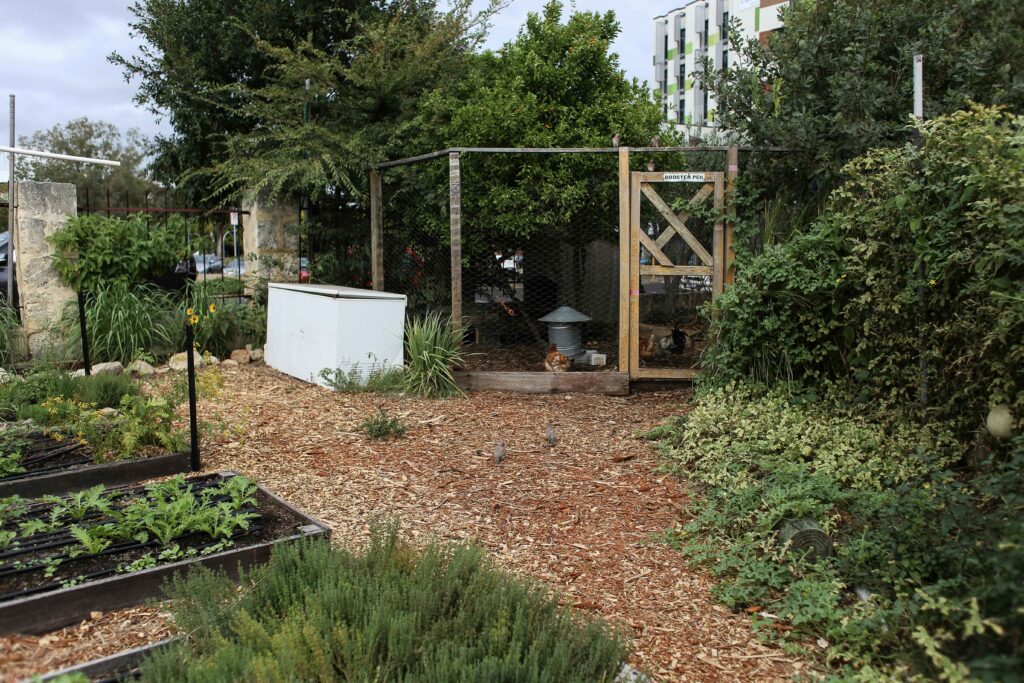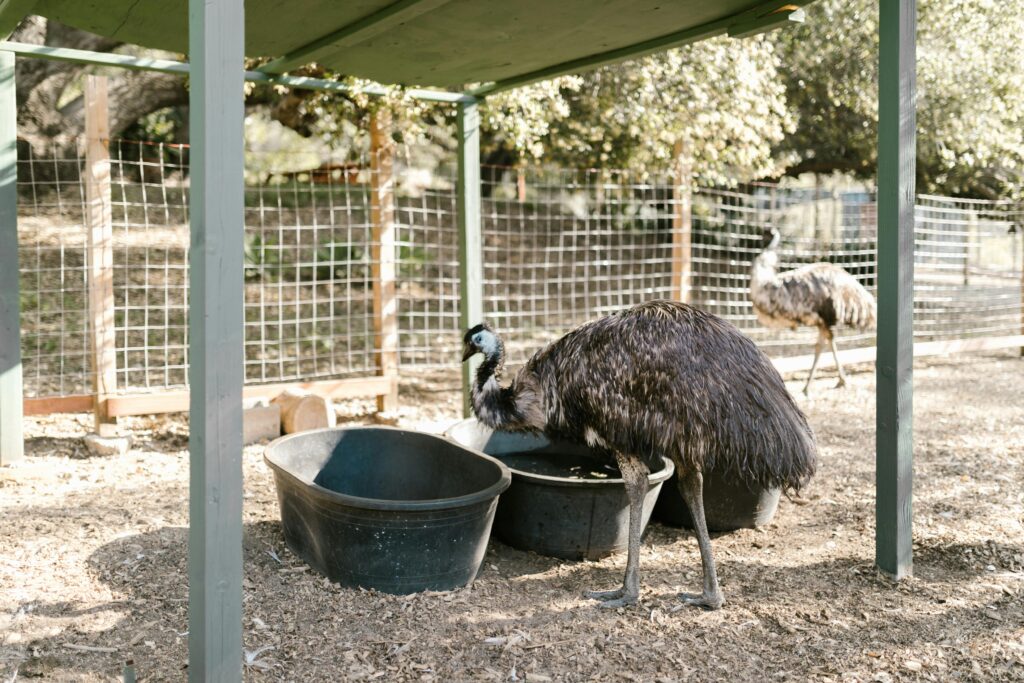Farm Shelters: Sustainable Structures for Livestock & Poultry
For any self-sufficient farm or homestead, shelters play a vital role in protecting livestock and poultry from extreme weather, predators, and disease. The right shelter can improve animal well-being, reduce stress, and increase productivity. Whether raising chickens, cattle, goats, or other farm animals, choosing the right structure depends on climate conditions, available materials, and the specific needs of the species being housed.
If you’re looking for personalised livestock shelter recommendations, try our AI-powered livestock shelter calculator here.
Understanding Shelter Requirements
Before constructing a farm shelter, it’s important to assess several key factors:
- Animal Needs: Different animals require varying levels of protection. Chickens and other poultry need secure, well-ventilated coops, while larger livestock like cattle require sturdy barns or open-sided sheds for shade and airflow.
- Climate Considerations: Australian weather can be extreme, with high temperatures in summer and heavy rains in some regions. Ventilation, insulation, and drainage must be incorporated into shelter design to ensure optimal conditions year-round.
- Predator Protection: Farms in rural areas often deal with foxes, wild dogs, and birds of prey. Secure enclosures and reinforced fencing are essential to safeguard livestock.
- Sustainability: Many self-sufficient farmers prioritize eco-friendly materials, rainwater collection, and solar energy integration when designing shelters.

Types of Farm Shelters
1. Barns and Sheds
Barns and sheds are versatile structures used for housing cattle, goats, sheep, and even equipment storage. They provide shade, warmth, and security from the elements.
- Open-Sided Barns: Ideal for warm Australian climates, these allow natural airflow while offering protection from sun and rain.
- Fully Enclosed Barns: Necessary for colder regions, enclosed barns help maintain warmth and can be fitted with insulation.
- Multi-Purpose Sheds: Used for animal housing and equipment storage, these structures help maximize space on a small farm.
2. Chicken Coops and Poultry Houses
Chickens, ducks, and other poultry require dedicated housing to ensure safety and encourage egg production.
- Mobile Chicken Tractors: Portable coops allow birds to graze on fresh grass while staying protected.
- Fixed Coops with Runs: Secure and spacious, these enclosures provide shelter and an outdoor area for free-ranging.
- Deep Litter System Coops: Designed for easier waste management, deep litter coops reduce the need for frequent cleaning.

3. Goat and Sheep Shelters
Goats and sheep need well-ventilated, dry shelters to prevent disease and hoof problems.
- Three-Sided Shelters: These simple structures provide wind protection and are cost-effective.
- Elevated Platforms: Goats prefer elevated surfaces, so adding platforms within shelters can increase comfort.
- Rotational Grazing Pens: Incorporating shelter within rotational grazing setups ensures animals always have access to protection.
4. Pig Pens and Farrowing Sheds
Pigs require shelters that provide shade and protection while allowing access to outdoor foraging areas.
- Shade Sheds: Basic roofed structures to keep pigs cool in summer.
- Farrowing Sheds: Designed for pregnant sows, these shelters provide warmth and security for piglets.
- Mud Wallows and Cooling Areas: Essential for pigs, as they do not sweat and need mud or water access to regulate temperature.
5. Aquatic Animal Enclosures
For those raising fish or waterfowl, dedicated shelters or pond structures can enhance production.
- Floating Platforms: Used in aquaculture, these structures provide shade and feeding areas.
- Duck Houses with Ponds: Secure nighttime shelters prevent predation, while integrated ponds allow natural foraging.
Building Materials and Sustainability
Choosing the right materials impacts the durability and sustainability of farm shelters. Options include:
- Timber: Readily available and easy to work with, but requires treatment to prevent rot.
- Metal: Galvanized steel is commonly used for barns and sheds due to its durability.
- Bamboo: A sustainable option that provides natural ventilation.
- Recycled Materials: Upcycling old pallets, tin sheets, and repurposed wood can reduce costs and environmental impact.
Designing and Constructing Farm Shelters
The design and construction of farm shelters depend on multiple factors, including the type of animals being housed, the local climate, available materials, and budget. While some shelters can be simple, others require specific features to ensure the well-being of the livestock.
- Permanent vs. Temporary Structures: Permanent shelters, such as barns and stables, are best suited for long-term use, providing durability and better protection from the elements. Temporary shelters, like mobile coops or lightweight shade structures, offer flexibility, particularly in rotational grazing systems.
- Ventilation and Insulation: Proper airflow is critical to prevent respiratory illnesses in livestock. Well-placed vents, windows, or slatted walls ensure fresh air circulation. Insulation helps maintain stable temperatures, especially for animals that are sensitive to extreme heat or cold.
- Drainage and Flooring: Elevated structures with proper drainage prevent waterlogging and muddy conditions, which can lead to foot infections and general discomfort for livestock. Flooring materials, such as compacted earth, gravel, or rubber mats, vary based on species needs and ease of maintenance.
Best Materials for Sustainable Shelters
Selecting the right materials contributes to the longevity, sustainability, and efficiency of farm shelters. Commonly used materials include:
- Timber: Readily available and easy to work with, timber is a popular choice for constructing barns, poultry coops, and small animal enclosures. However, it requires treatment to resist pests and weather damage.
- Metal: Steel or aluminum frames are durable, fire-resistant, and often used for large barns and storage areas. They require insulation to prevent excessive heat buildup in warmer climates.
- Recycled Materials: Repurposing shipping containers, reclaimed wood, and corrugated metal sheets can be a cost-effective and environmentally friendly option for building shelters.
- Natural Materials: Earthbag structures, cob, or straw-bale shelters provide excellent insulation and sustainability for those looking for eco-friendly alternatives.
Estimated Costs for Different Shelter Types
The cost of building farm shelters depends on materials, size, and complexity. Below are general estimates for various shelter types:
- Small poultry coops (2-4 hens): $200 – $500 (DIY using timber and wire mesh)
- Medium-sized goat or sheep shelters: $800 – $3,000 (Timber or metal-framed with roofing)
- Horse stables or large barns: $10,000 – $50,000 (Metal or timber with insulation and ventilation systems)
- Sustainable structures (earthbag, straw-bale): $1,500 – $10,000 (Lower cost but requires labor-intensive construction)
Sizing and Space Requirements
Providing sufficient space within shelters is essential to the health and welfare of farm animals. Recommended space allocations per animal include:
- Chickens: 2-4 square feet per bird inside the coop, with an additional 8-10 square feet per bird in an outdoor run.
- Goats and Sheep: 15-20 square feet per animal in covered shelter, with at least 200-400 square feet per animal in an outdoor grazing area.
- Pigs: 20-50 square feet per animal inside a shelter, with larger outdoor enclosures for exercise.
- Cattle: 80-100 square feet per animal in barn settings, with access to larger pasture areas.
Shelter Placement and Orientation
Where you position your shelters can impact their effectiveness and the well-being of your livestock. Considerations include:
- Sun Exposure: Positioning structures to maximize shade in summer and sunlight in winter helps maintain a stable internal temperature.
- Wind Protection: Orienting shelters to shield animals from strong winds (typically from the south or west in Australia) reduces stress and heat loss.
- Drainage: Placing shelters on slightly elevated ground prevents flooding and ensures dry bedding.
- Accessibility: Easy access for feeding, cleaning, and medical care improves daily operations and efficiency on the farm.
By considering these factors, farmers and homesteaders can create shelters that promote animal welfare, efficiency, and sustainability. Investing in well-designed structures tailored to specific needs ensures long-term benefits for both livestock and farm productivity.

